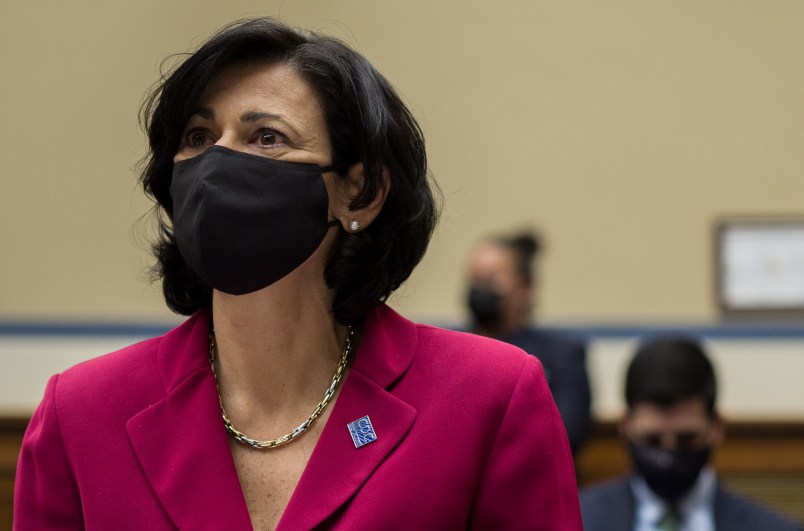CDC Director Rochelle Walensky on Sunday defended the agency’s new guidelines saying that those who are fully vaccinated against COVID-19 can safely remove their masks in most circumstances.
Appearing on MSNBC’s “Meet the Press,” Walensky was pressed on her comments while testifying to Congress last week. Walensky pointed to a third of counties in the country having over a hundred cases per 100,000 people when explaining the agency’s previous decision to continue recommending masking for people who are vaccinated.
The CDC, however, lifted mask-wearing recommendations for those who are fully vaccinated just days after Walensky testified before Congress. According to the Washington Post, Walensky gave the green light for the agency to drop the mask mandate for vaccinated people prior to her testimony before Congress.
Asked what had changed during the 72-hour period between her comments and the CDC’s new guidance, Walensky cited the low rate of COVID-19 deaths that the country had not seen since April 2020, before saying that “evolving science” prompted the agency’s updated guidance on mask-wearing for those who are fully vaccinated.
“Now we have science that has really evolved just even in the last week and a paper that was published as recently as Friday that demonstrates that people who are vaccinated are protected, that this vaccine is working in the real world just as it did in the clinical trials, that it’s working against the variants, and that if you get an asymptomatic infection after you’ve had the vaccine, that you really can’t give it to somebody else,” Walensky said. “So, really just in the last two weeks, we’ve had a lot of evolving science.”
When asked about why the agency did not create a metric for vaccination rates in states before it issued its new guidance for vaccinated people, Walensky emphasized that local authorities are in the process of figuring out how to safely loosen public health guidelines.
“I think it’s really important to understand that, as communities are working one at a time locally to figure out what their policies are going to be as they open up, that they understand what is important and what is true for individuals who are vaccinated,” Walensky said.
Walensky added that the CDC’s updated guidance was a “first step” that was “science-driven” now that studies show that those who are vaccinated are not at risk of getting infected if they remove their masks in most circumstances.
“If you are not vaccinated, importantly, get vaccinated. But those are the people who are at risk of disease,” Walennsky said. “And so, we really need to understand the individual risk as we’re making community-level decisions.”
Pressed on confusion among state and local officials in response to the CDC’s updated guidance, masks are still required in most indoor settings, Walensky maintained that the CDC’s new guidance does not give permission to “shed masks for everybody everywhere.”
“This was really science driven, individual assessment of your risk,” Walensky said. “Now, that’s the first step that we need to take in our guidance to understand what’s the individual risk. And now we all need to work together and CDC is hard at work now saying what does this mean for schools, for travel, for camps, for businesses.’
Watch Walensky’s remarks below:







Okay, somebody’s gotta get the comments kicked off, and that might be me this morning.
CDC fucked this one up. Saying vaccinated people can go without masks, but having HIPAA block any ability to require verification, makes it pointless.
It’s Josh’s new policy that only hackers are authorized to post on the threads.
I’m old enough to remember when the CDC was internationally respected as one of the best health agencies in existence.
I have no idea what you’re implying.
